The Harry Clarke connection to Marino/Abbey Lea by Pippa McIntosh. A presentation which took place on Wednesday 19th October 2022.

The Ambassador’s partner, Pippa McIntosh has led research into the history of the property and discovered its unique connection to internationally renowned Irish illustrator and stained-glass artist, Harry Clarke. Pippa, in conjunction with Killiney Bay Community Council, gave a presentation at Abbey Lea on 19th October entitled: Abbey Lea, Residence of the Australian Ambassador to Ireland and it’s Harry Clarke Connection. You can read a summary of the presentation and view photographs of the event here.
The Story of Marino and its transition to Abbey Lea
Research undertaken by Pippa McIntosh as part of the Australian Government’s building restoration project
Abbey Lea has been the residence of the Australian Ambassador to Ireland since 1965 – more than half its life. Formerly known as Marino, the house was rebuilt and remodelled following a fire in 1909. The owner Laurence Ambrose Waldron employed his friend and cousin, architect Laurence McDonnell to redesign the house in an Arts and Crafts style. Waldron was well known as a patron of the arts and supporter of the Celtic Revival Arts Movement, who loved entertaining at the house – and no expense was spared in the refurbishment.
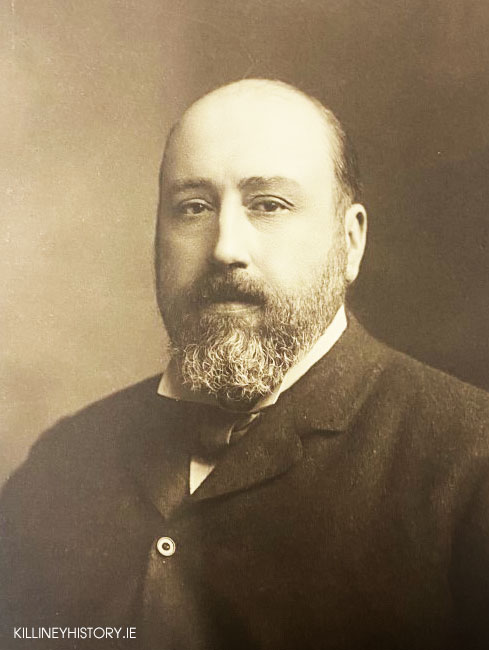
Laurence Waldron was the fourth son of Laurence Waldron D.L, of Helen Park, Tipperary and was born at Ridge Hall, Ballybrack in 1858 and educated at the Oratory School, Birmingham. His career as a stockbroker was hugely successful, joining the profession in 1881. In 1896 he joined the directorate of the Dublin United Tramways Company, eventually becoming Chairman. He succeeded James McCann both as Chairman of the of the Grand Canal Company and as member of Parliament for the St. Stephen’s Green Division of Dublin in the Nationalist interest. He was also a director of the Dublin Gas Company, a Commissioner of National Education, a member of the Senate of the National University and of the Governing Body of University College Dublin. He also served on the boards of the Dublin & Kingstown Railway (Chairman), and the Great Southern & Western Railways of Ireland. He was a Governor of the National Art Gallery, a Trustee of the National Library and a Commissioner of Charitable Donations and Bequests. In 1911 Waldron was sworn of His Majesty’s Privy Council in Ireland. Laurence Waldron founded stockbroking firm Messrs. Laurence A. Waldron and Co in the 1880’s, purchasing Marino upon his growing commercial success from his stockbroking colleague Joshua Chaytor. His friends, who included literary figures such as Oliver St John Gogarty, James Joyce, George Moore, and J. M. Synge, knew him as ‘Larkey’. Waldron was renowned as a raconteur and epicurean who loved to welcome and lavishly entertain guests at Marino, whose long lunches and dinner parties were legendary.
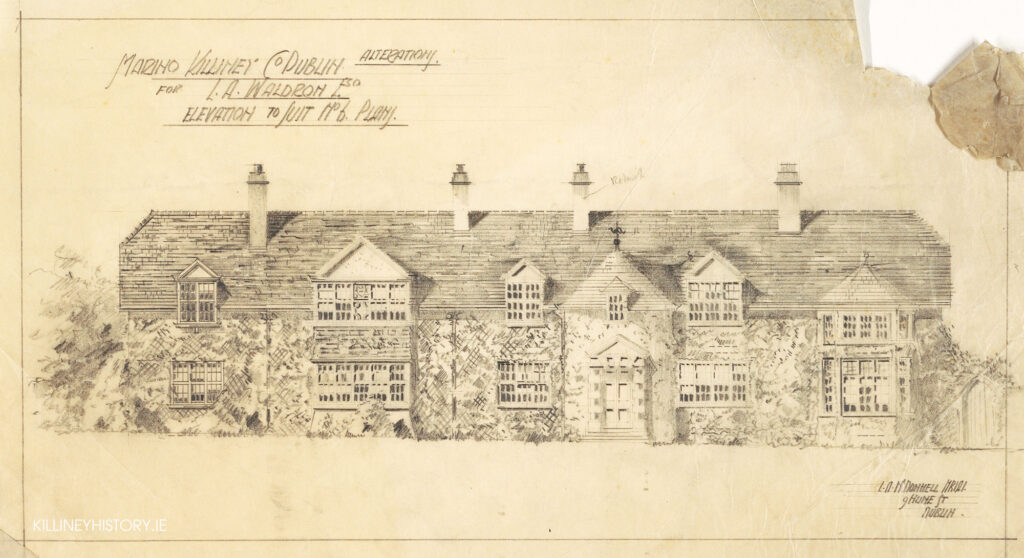
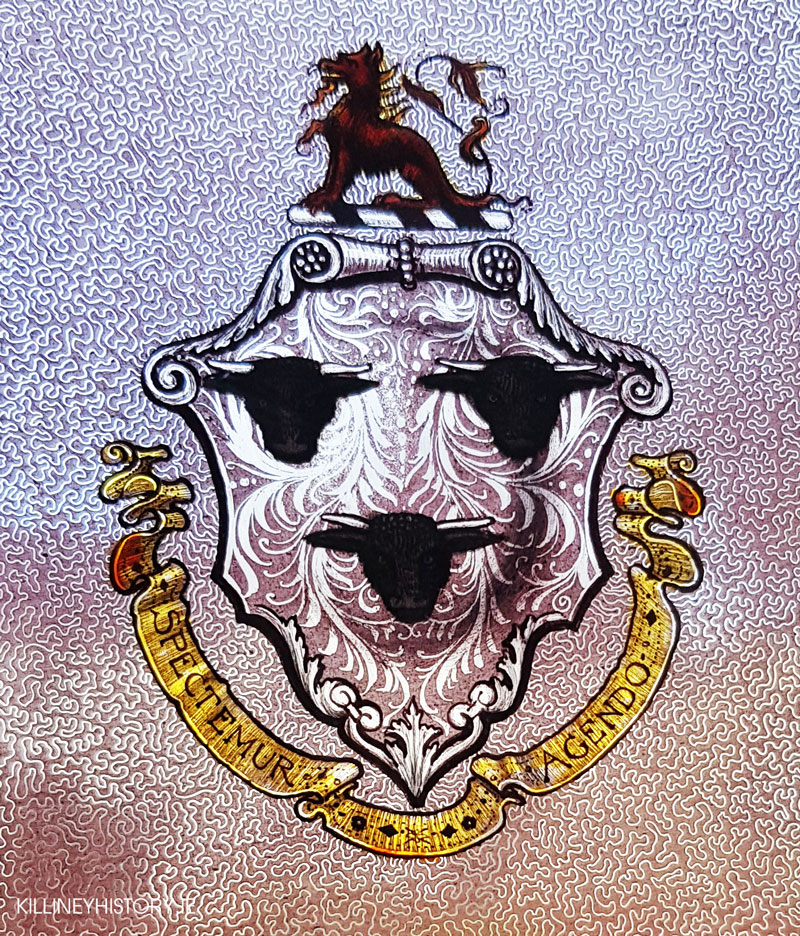
The house faces south receiving light into all its main rooms year-round. It is of white roughcast with projecting bay windows framing the view with land that once ran south down to Military Road. A plaque below the largest of three pediment-gables displays the Waldron achievement of arms in mezzo-rilievo and the motto Spectemur Agendo (let us be judged by our acts (or deeds)), a quote from Ovid’s Metamorphoses. Harry Clarke also captures this family crest and motto in a small stained-glass window on the half landing of the main staircase.
Inside, the house features beautiful fireplaces and an intricate mosaic floor in the entrance hall featuring a repeating fan pattern with seashell motifs interspersed and a stylised wave design in the border. The Irish Architectural Archive confirms this mosaic floor survived the 1909 fire and is possibly as old as the original house owned by stockbroker Joshua David Chaytor, built by Boyle in approximately 1860. The footprint of the house was extended to the west in the 1909 remodel, as well as the addition of more service rooms to the north side of the house.

The house has a significant connection to Harry Clarke with two small stained-glass works still in the house, the above mentioned Waldron family crest window and a small sun with a face for the bullseye window that lights the front porch. It is however ‘a seminal series of nine cabinet panels’ inspired by J. M. Synge’s poem ‘Queens’ by Harry Clarke that was commissioned by Waldron in 1917 for which the house is most known for. This series of miniature panels was originally set in the bay window of the Library and was later removed by the Waldron family following the owner’s death in late 1923. A granite plinth in the centre of the back garden features poetry which Clarke echoed on the memorial card he drew for Waldron’s funeral in early 1924, which also features Marino’s garden and view from the house of Bray Head, the Sugarloaf Mountain and the Wicklow Mountains beyond.
Harry Clarke designed a Christmas card for Waldron in 1917 which he called ‘the Angel of Peace’, featuring “an attenuated angel setting free a haloed dove of peace while hovering over Killiney Bay”. There’s even a miniature nativity scene in the left foreground, “poised on a cliff-face beneath Sorrento Terrace” with the distinctive Bray Head and Sugarloaf Mountain in the distance. Quotes relating to the description of this Christmas card by the late Nicola Gordon Bowe.
For more than 100 years the house and gardens has reflected its Arts and Crafts heritage. The property’s extensive gardens feature clipped hedges, sun dials, seats, winding paths made of pebbles from Killiney beach and informal rockeries very much in the Arts and Crafts tradition, with wonderful views over Killiney Bay and the Wicklow Mountains beyond. Directly behind the house is a beautiful glasshouse believed to have been designed by Richard Turner, with a crested ridge and curved, scalloped glass. The glasshouse was fully restored 2011 by the Australian Government and is a beautiful entertaining venue. In the north-east corner of the property there is a charming little Summerhouse, octagonal with a lower brick-built section and a terracotta-tiled roof.
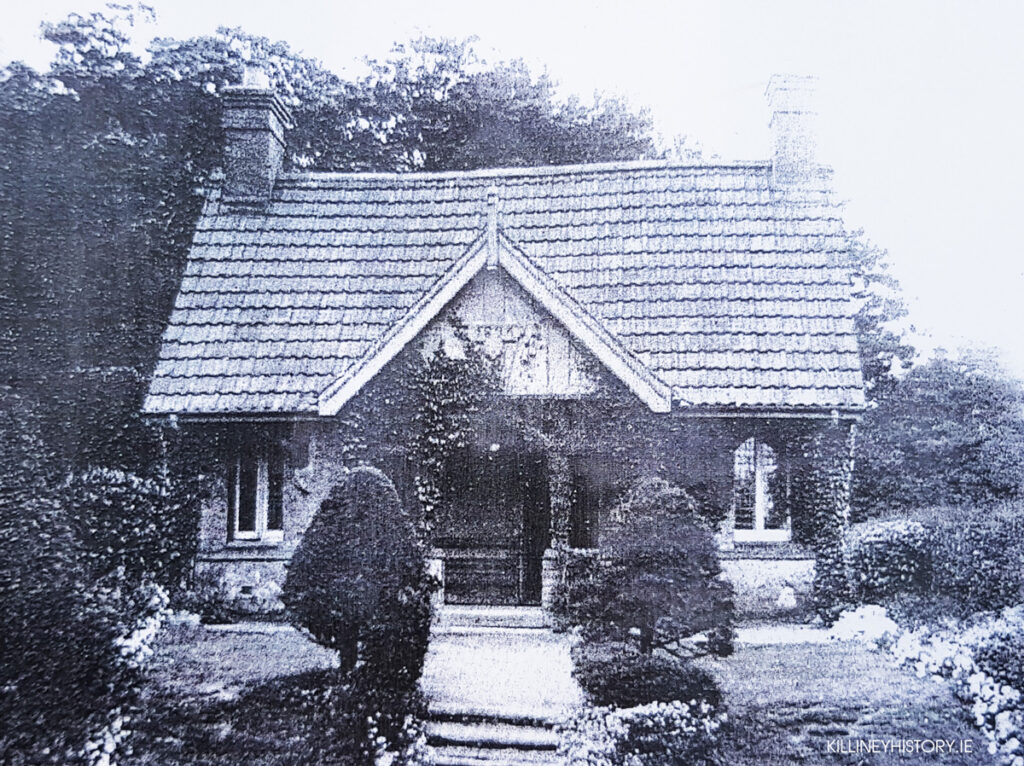
At the north boundary is the Mews (the former coach-house) which is a handsome dashed two-storey block with a clock set in a small pediment-gable over the middle bay. Originally there were two gatehouses with entrances onto Killiney Hill Road at the western end, though only one is now part of the property with the other carved off prior to 1950, now called Dunlewy on the corner of Killiney Hill Road and Marino Avenue West.
Following Waldron’s death, the house was sold to prominent ear, nose and throat surgeon Sir Robert Woods in 1924, who was a friend of Waldron’s and a frequent visitor to events at the house. It is known Woods was also the mentor of Oliver St John Gogarty, who also frequented the house in both Waldron’s and Woods’ time.
The Woods family sold the house after Sir Robert and Lady Woods passed in 1950 to Lady Joyce Talbot de Malahide, who in collaboration with the Marrowbone Lane Fund and the Irish Association of Cerebral Palsy in 1951 started a residential clinic for 20 girls with cerebral palsy at the western end of the house. Lady Talbot called the part of the house where the girls stayed in the resident educational clinic ‘Marino’ and the part of the house where she lived ‘Abbey Lea’. Later, Lady Talbot De Malahide donated a sum of £3,000 in memory of her late husband to purchase a property in Bray, providing a permanent home for the girls. The name Marino travelled with the girls to Bray, with the creation of Marino School – a residential school for children with Cerebral Palsy, which was opened in 1956. Marino School in Bray still exists, and their patron is Lady Talbot de Malahide. The name Abbey Lea stayed with the property in Killiney and has been its name since.
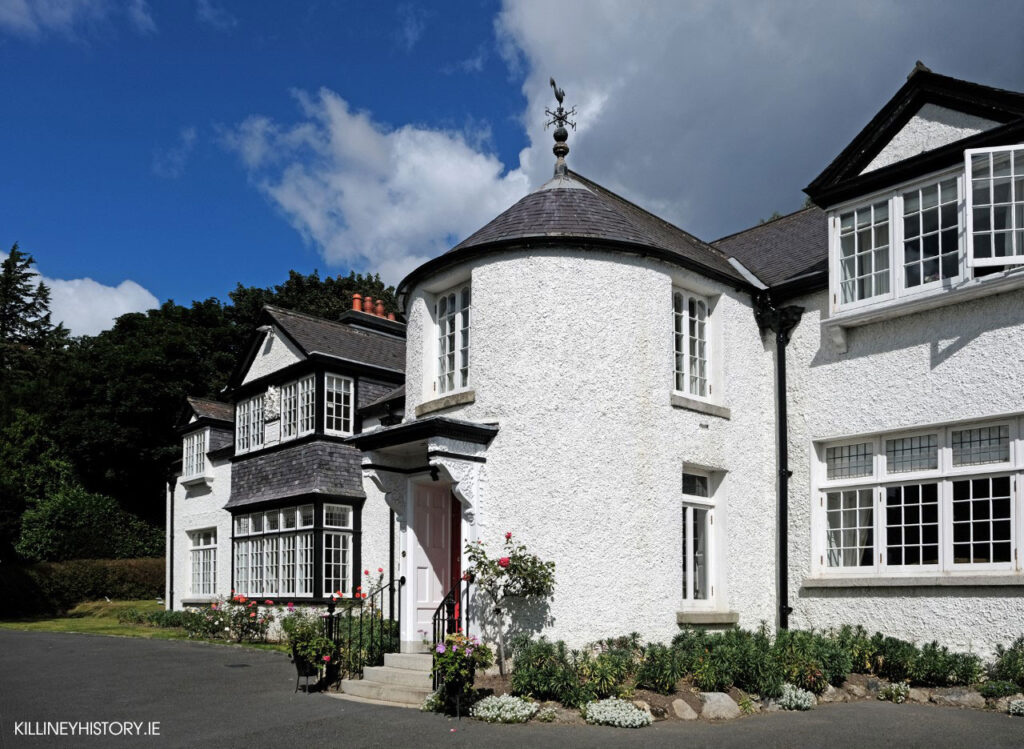
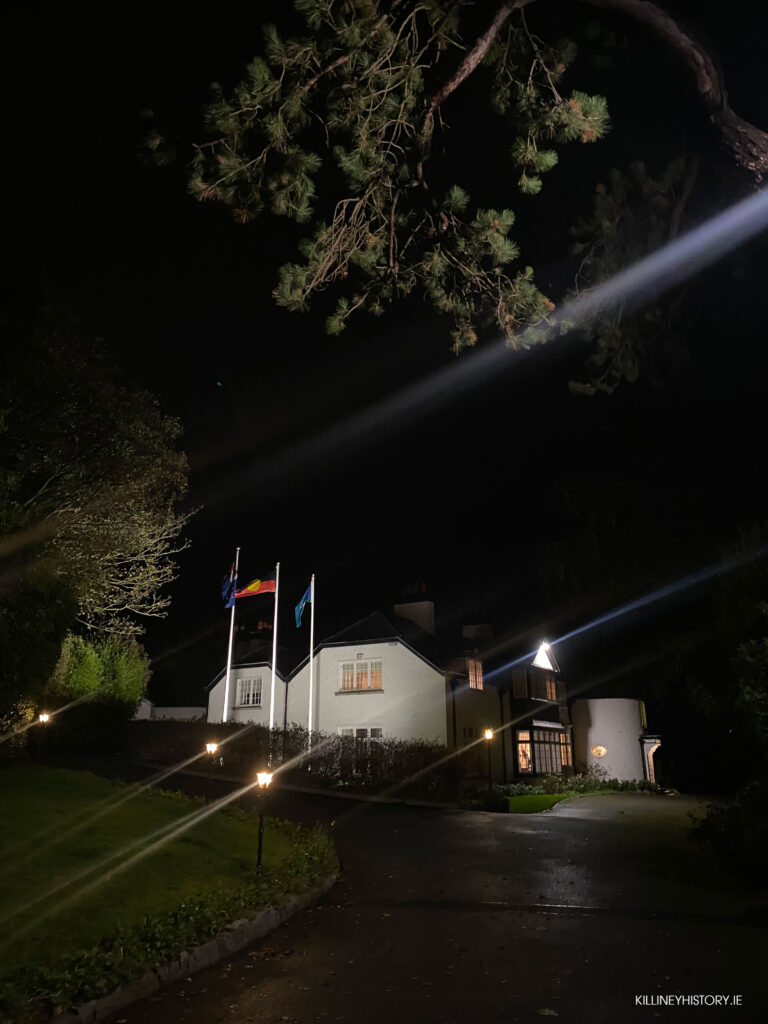
A history in maps
1866
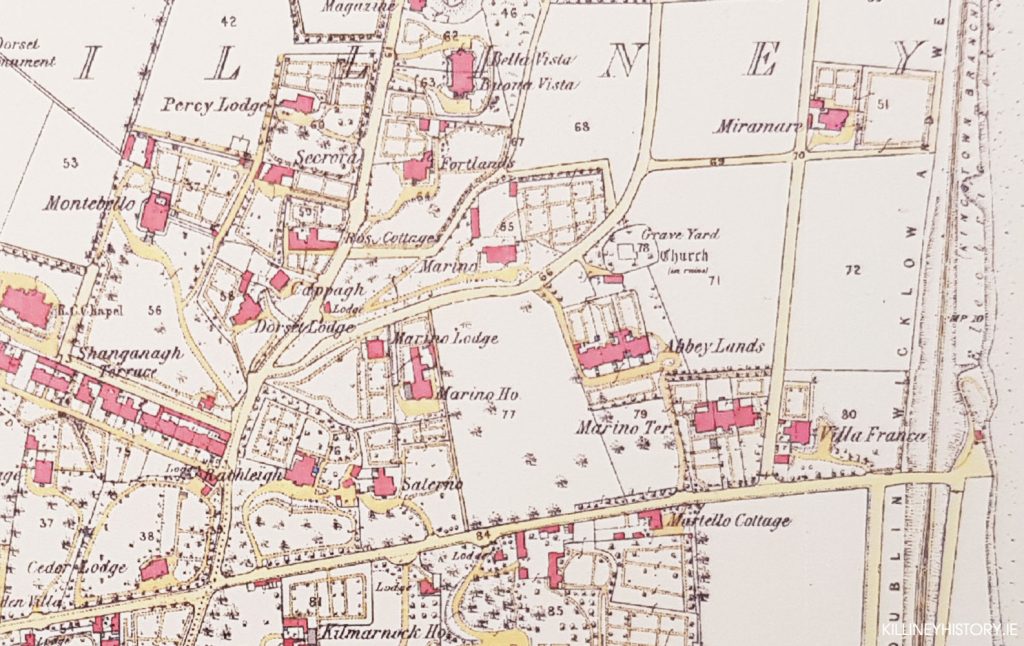
1888
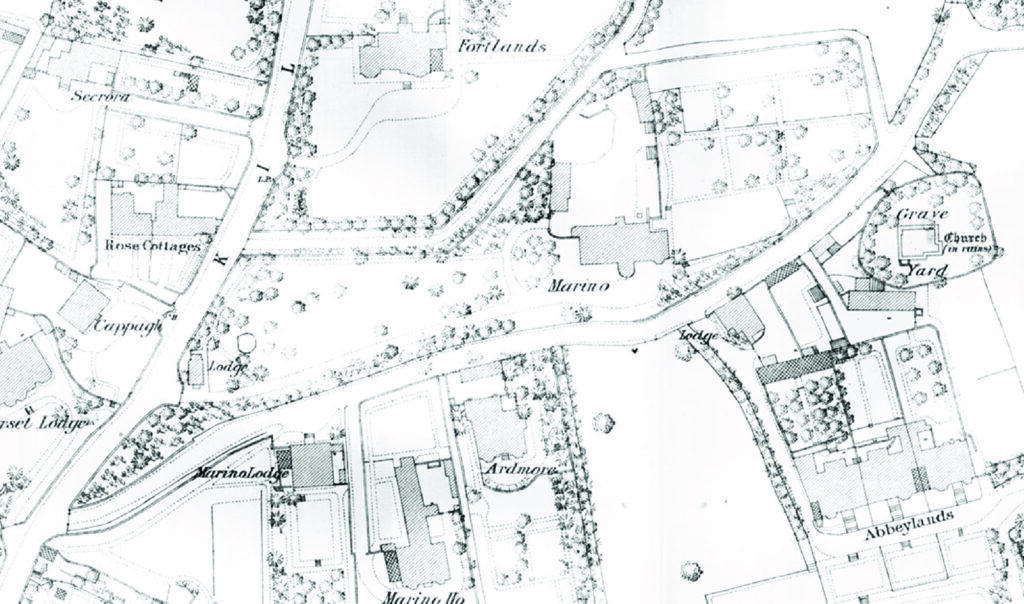
Description by Peter Pearson from Between the Mountains and the Sea (1998)
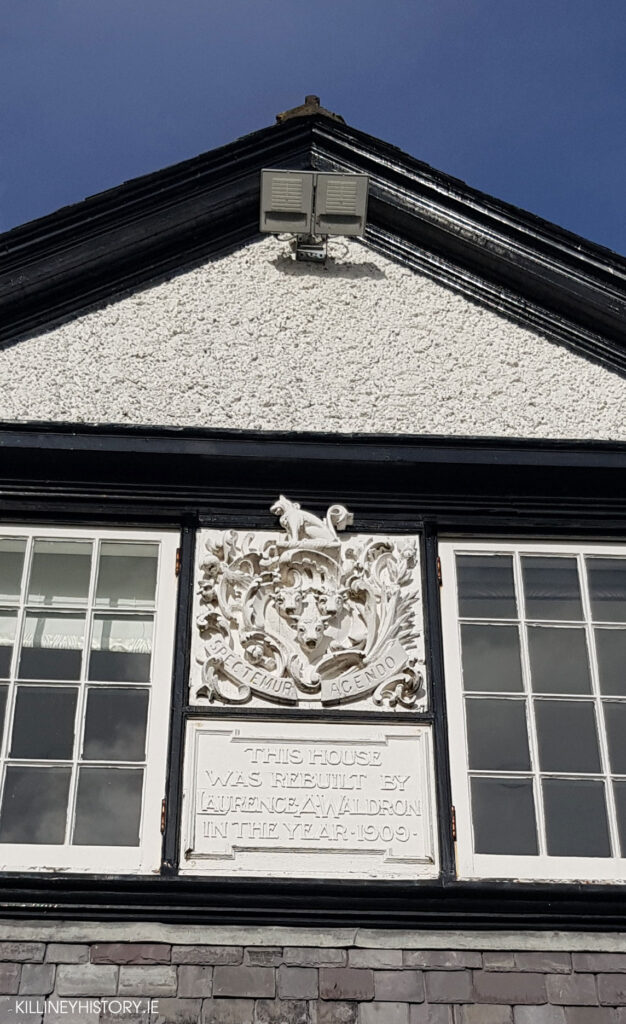
Marino Though this house is included among the early 1830 houses of Killiney, a plaque on the wall records the fact that it was largely rebuilt: ‘this house was built by Lawrence A. Waldron 1909′. It is a large `Arts and Crafts’-style house with wide-mullioned windows which have small, leaded panes of glass. It is roofed with small slates and has dormer windows. The entrance has elaborately carved brackets and is built in the form of a projecting bow.
In the garden there is an attractive octagonal gazebo with round-headed windows of coloured glass. It is now the residence of the Australian ambassador. The original house was occupied by a Joshua Cheator, or Chaytor, who owned a substantial amount of land in Killiney and built a number of Victorian houses including St Anne’s, Buenavista, Abbeylands and Mentone. Cheator had previously lived at Purbeck Lodge in Monkstown where he had constructed four houses.
Report from Saunders’s News-Letter 14 December 1859
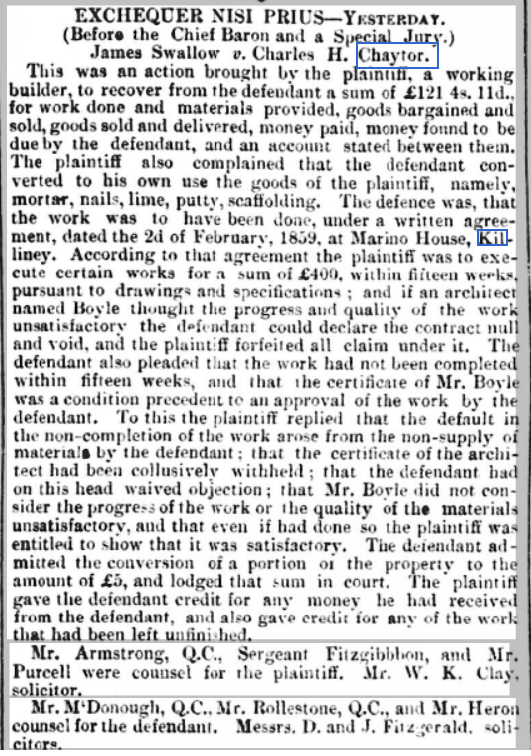
Description by John O’Sullivan from The Book of Dun Laoghaire (1987)
Marino is the earliest Ballybrack house, but the original house was mainly rebuilt by Lawrence Waldron, M.P. for St. Stephen’s Green, Dublin, in 1909. He was regarded as the premier Catholic in Killiney and Ballybrack after the death of Lord Justice Fitzgerald in the 1890s. Waldron was the founder of the Dublin stockbroking firm of Dillon Waldron and a railway magnate, with a great art collection at Marino. In his time the outstanding features were the Bossi Fireplaces and Sheraton Furniture. The next owner was Sir Robert Woods, who bought it from the Waldrons in 1923. An eminent Dublin surgeon and sometime M.P. for Trinity College Dublin; he also had a fine art collection at Marino. His town house was the former British Embassy building in Merrion Square, currently occupied by the Electricity Supply Board. The Woods family sold Marino to Lady Talbot de Malahide, the widow of the second last Lord Talbot de Malahide, who was a cousin of the last Lord Talbot de Malahide. Lady Talbot started the Marino clinic and later changed the name to Abbeylea. The clinic, relocated in Bray after the sale of the house to the Australian Embassy. Now the residence of the Ambassador, who retained the new name.
Interior
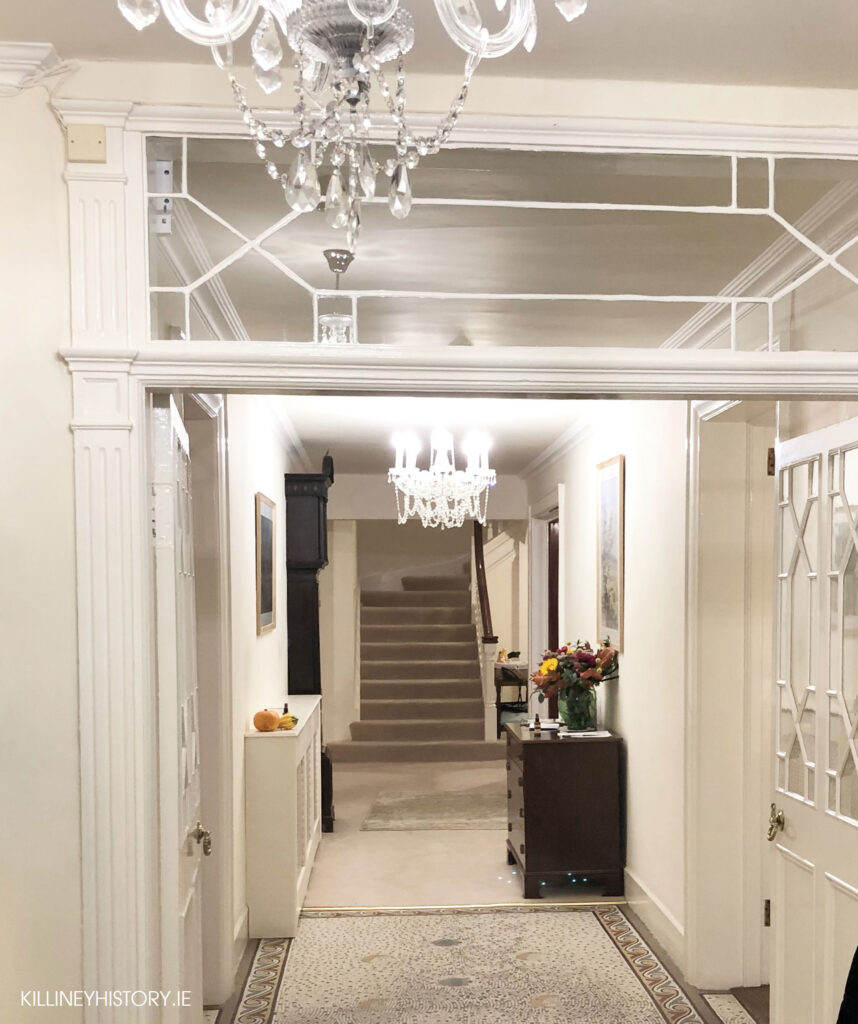
Cars for Hire advert c.1924
Thanks to Pól Ó Duibhir for providing the photocopy of the image below from the Official Guide to Dunlaoghaire c.1924 published by Simmath Press. (This obscure Dundee publisher was acquired by Valentines of Dundee in 1923 to specialise in the production of guidebooks, illustrated with Valentines views.)
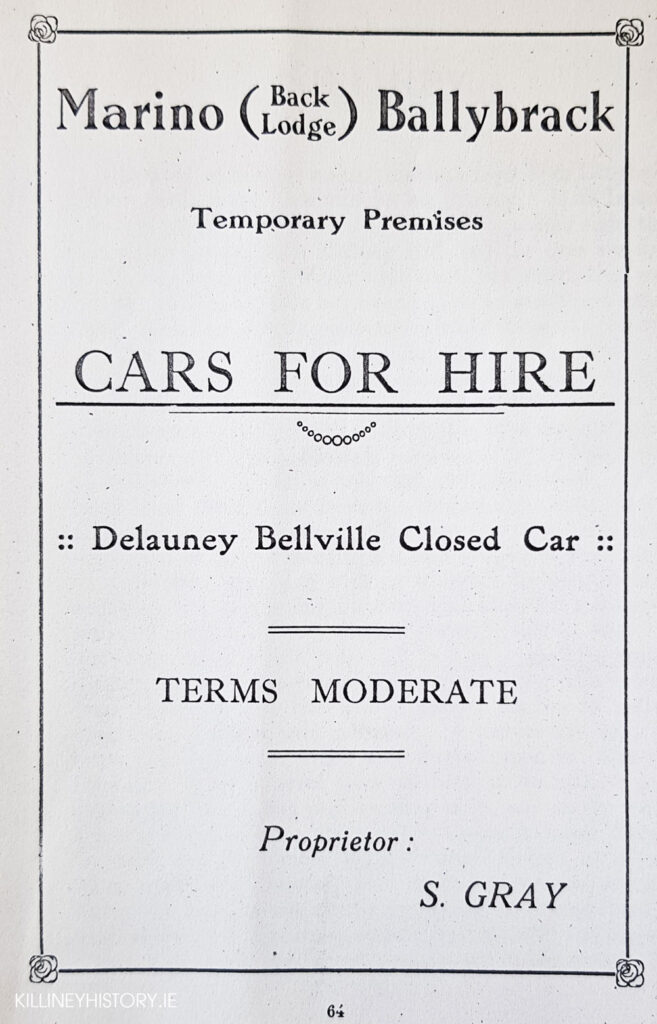
According to Laurence Waldron’s will Sidney Gray who worked for Mr Waldron was gifted £100 pounds on top of a year’s salary that all the staff at Marino were gifted if they’d been in Waldron’s employment for 2 years or longer. The will states that the car went to Waldron’s niece (as did the house) so we presume the ad was at the direction of the niece who was one of the executors of his will. (Thanks to Pippa McIntosh for this information from the will and the image of the car below.)
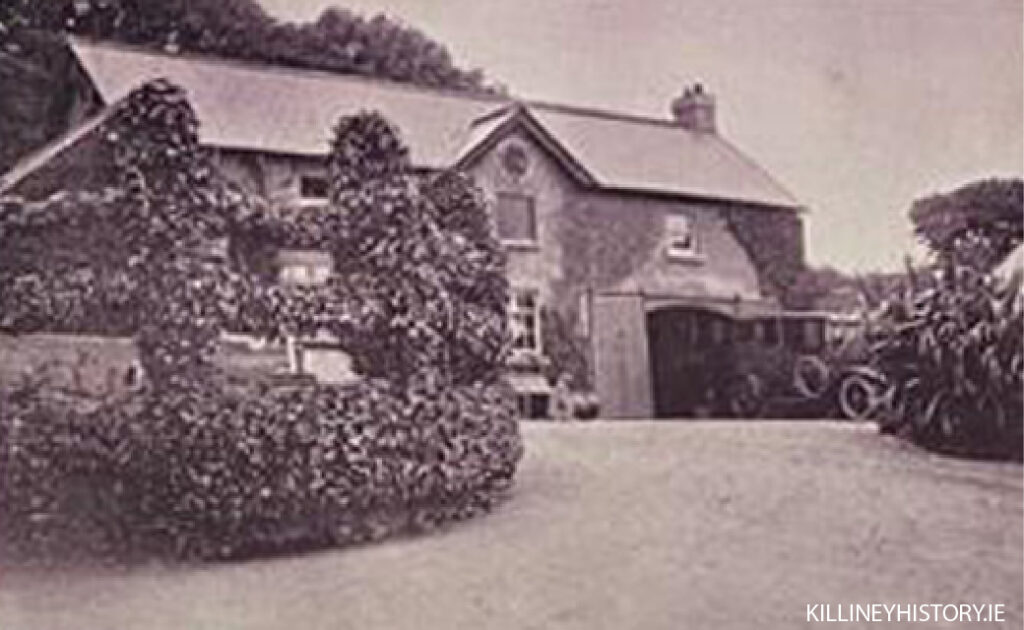
Description of Marino in 1836 To Let Advert
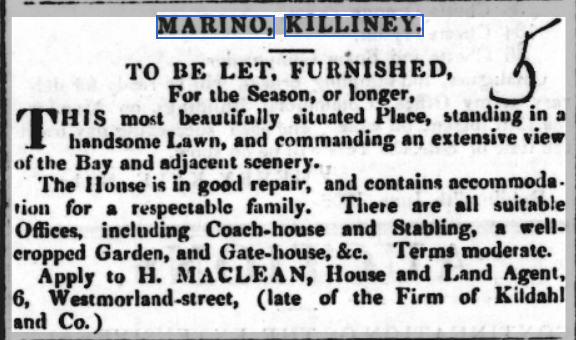
List of occupants over the years from various sources
| Year | Occupant name | Name of house | Source |
| 1810 | Mr. Willock | No name given | Lease map of Compton Domville Esq |
| 1836 | To Let advert | Marino | Saunders’s News-Letter |
| 1837 | Mrs. King | Marino | Lewis & OS Map |
| 1847-50 | Cheator, J., Esq | Marino | Thom’s |
| 1857 | Armstrong, William | Marino | Death notice of Sarah Armstrong |
| 1858-60 | Cheator, J., esq | Marino | Post Office Guide |
| 1868 | Chaytor, Charles H. esq | Marino | Thom’s |
| 1877 | Mrs. Donaldson | Marino | Thom’s |
| 1880-1892 | Chaytor, Joshua D. esq & Mrs. | Marino | Thom’s |
| 1894 | Chaytor, Joshua D. & Charles H. & Thomas esq | Marino | Thom’s |
| 1900 | Waldron, L.A. Telephone Number 17. | Marino | Telephone Directory |
| 1900-1924 | Waldron, Laurence A. P.C. | Marino | Thom’s |
| 1930-1937 | Woods, Sir Robert H. | Marino | Thom’s |
| 1940-1947 | Woods, Lady | Marino | Thom’s |
| 1950 | Woods | Marino | Thom’s |
| 1951-1954 | Lady Talbot de Malahide | Abbeylea | Thom’s |
| 1960 | Capt. Turbet? | Marino | Thom’s |
| 1965 | Residence of Australian Ambassador | Abbeylea | Various |